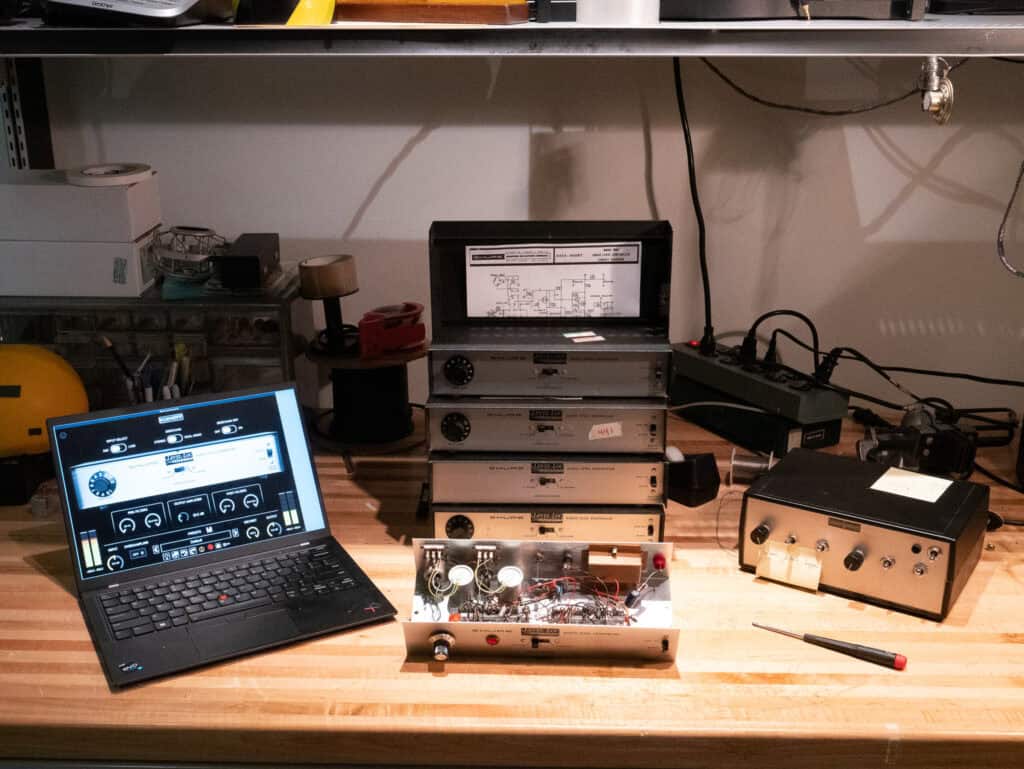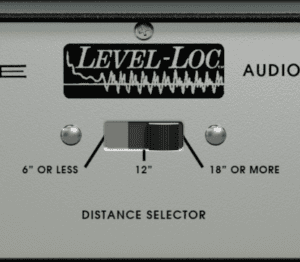Distorted Drums: Lo Fi and Faux Fi.
Distorted drums are a thing these days—it's always been a thing, generally by accident. These days it's on purpose.
Motown Records... check out the overloads on the tom fills... really, the whole record is grainy and saturated.
A lot of this was accidental—happy accidental. It happens to sound good, but that’s a bug, not a feature.
It’s easy to overload tape. The VU meters used were designed to accurately track the envelopes of voices and entire ensembles. The faster the transient, the less accurate the meters. Recording drums with a peak meter reading at 0VU meant that you were hitting the tape closer to +12dB, well over its headroom. Couple that with a shortage of tracks. When you only had eight or sixteen tracks to work with, you couldn’t burn a bunch of them on the drums, you had to smush all that together to a few tracks to conserve space. Smushing things together = saturation, especially if you’re overloading some things, or if you’re bouncing tracks together and adding another generation of noise and distortion.
The sound that really grabbed me was Radiohead’s Planet Telex. Of course, the whole thing is distorted, but there’s an intentionality to the sheer amount of distortion on The Bends. It wasn’t a happy accident.
Distorted drums are now a signature thing for bands like Tame Impala.
Kevin Parker (he’s Tame Impala) uses a variety of drum sounds, from lo-fi mic’d up kits to samplers run through processors. Let’s take a look at how to get some of those sounds.
Lo-Fi
Check out Tame Impala drums here. You’ll notice they’re in mono, are roomy and quite boxy sounding. This sounds closer to Motown than Radiohead.
For a lo-fi sound, use lo-fi mics. Lo-fi micing means fewer of them, and cheaper mics, too.
What would you find in the basement where a punk band records their demos? A couple of dynamics—like a bunch of SM-57s. And you’d probably find a badly tuned drum kit, heads covered with old duct tape.
Try using a dynamic mic for an overhead, and another on the kick. You can add something to the snare as well, just make sure you check the phase against the overhead. Maybe mic the snare on the side of the shell or some such. Something goofy. Stick the mic on the beater side of the kick so it’s picking up the snare as well. Use a box for a kick. Hit the snare with brushes. Do a Tchad Blake and stuff a mic down a tube and stick that into the middle of the kit somewhere.
Feel free to overload everything a bit, but beware: if you’re micing with dynamics and clipping mic preamps, you’re losing a lot of transient response. Some of that loss is the charm of the sound, but you might not want that. Listen on the Tame Impala clip: those drums are lost and don’t punch through the mix. No transient, no punch.
I have always preferred to track the sound I wanted decisively and not invent it in the mix. That means letting the tracks you record have some say in the way the song is built. If you missed with the drum sound, you might have had to overdub something else—someone stomping the floor or hitting a tabletop. You might have lost the highs of the cymbals, so you added a tambourine. Change the bass part. Add claps. Run the drums through some strange EQ setup. Or compress the hell out of it.
The point is there were all sorts of creative solutions that came into existence because of a problem you unintentionally made for yourself. I set levels for a kit based on the drummer using brushes and playing lightly. I totally forgot that for the second half of the song he switched over to sticks and beat the crap out of things. It was my arrangement—damn, I’m a moron! But it sounded great so we kept it.
But that isn’t what happens these days. So, let’s figure out an in-the-box approach.
Faux Fi
There are many plug-ins that mangle drums, because it's easy to set things wrong. Assistants would often ask me in sessions, “How do I get things to sound cool?” I would reply, “Record them badly.”
But if you’re working with samples, loops or drum machines, chances are things are recorded really well. Enter our Shure Level-Loc plug-in.
The Korneff Audio Shure Level-Loc is a precise emulation of the classic hardware piece. Shure designed the original to even out microphones on a PA system. It is a merciless limiter that makes every signal passing through it the same level. Use it on a microphone at a school board meeting, and the quiet teenager is the same volume as the pissed-off dad. Use it on a drum set, and the kick, the snare, the hihat, and the room ambience are now all at the same level. Smashed flat. And distorted to all hell, because the circuit uses inexpensive transformers. Transformers overload, saturate, and clip, adding in those messy harmonics that result in crunch and character.
Start out by routing all your clean drums to a stereo bus and instantiate a Level-Loc on the bus insert. You can also route kick, snare and room mics and leave out everything else—whatever you want to affect, route it to the bus and through the Level-Loc. Press play.
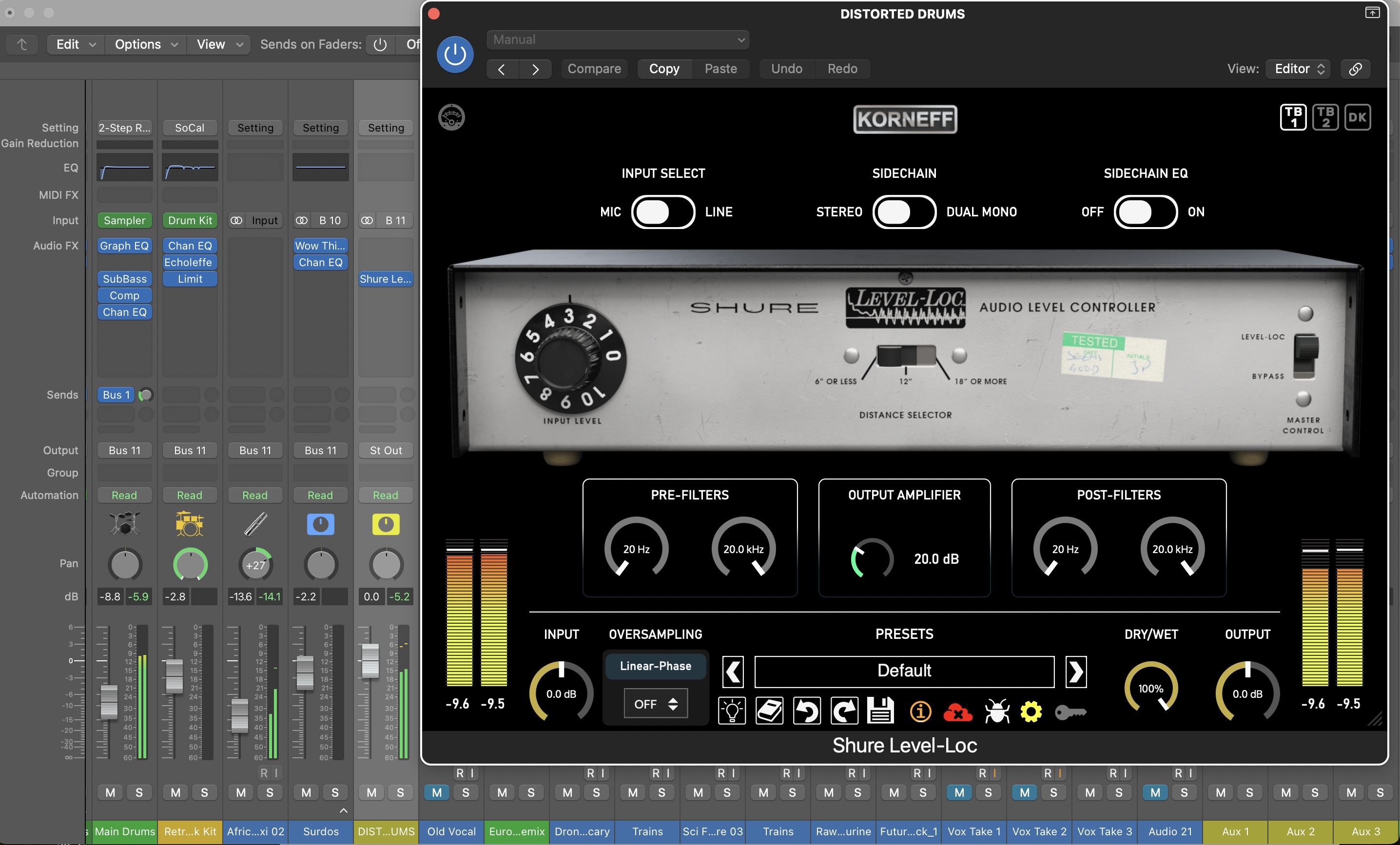
Mouse over to the Korneff nameplate and click to flip things over and access additional controls. Find the OUTPUT IMPEDANCE switch just left of center and set it to LOW. This changes the transformer configuration and lets more of the body of the drums get through.
The MICROPHONE LOAD will change the frequency response of things. Play with it and see what you get.
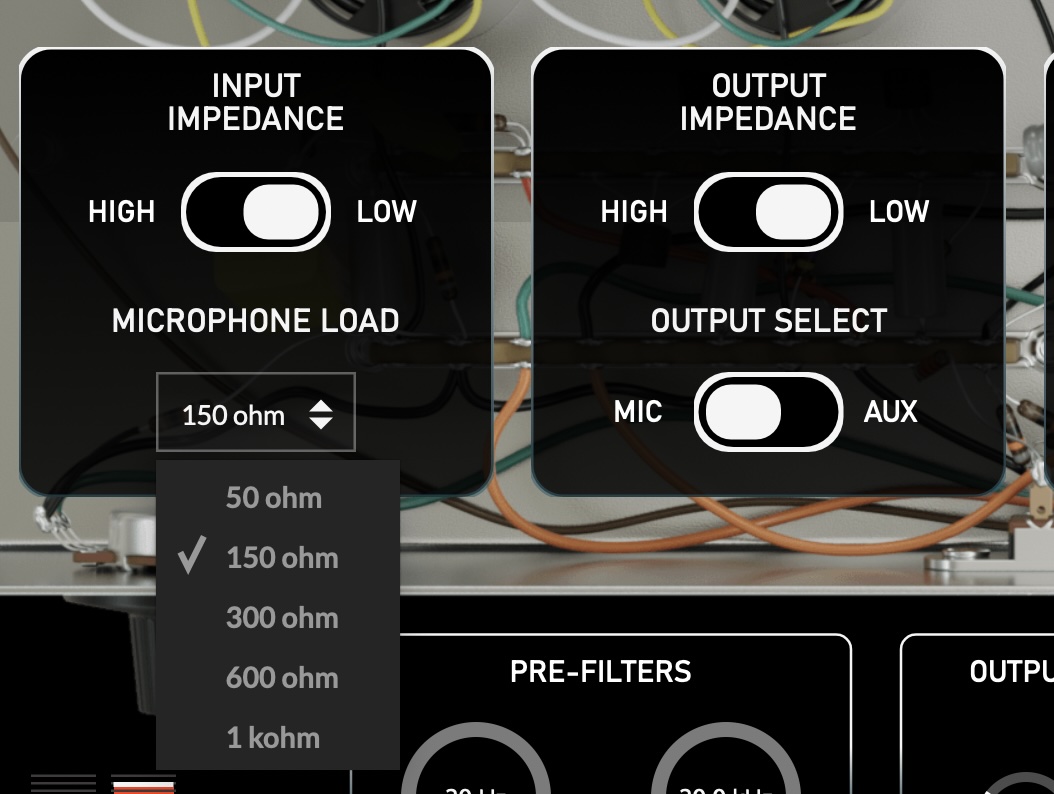
Play with the RELEASE TIME controls by changing resistor and capacitor values. I tend to like things on the faster side when it comes to lo-fi drum sounds.
To the far right is POWER SUPPLY. The default setting is BATTERY. Click on the very handsome Engstrom 9v and turn it counterclockwise. Things should get fun and distorted at about 5v. The lower you set that voltage, the more fabulously awful things will sound. This control, by the way, emulates what happens when you use dead batteries. In the old days, engineers would deliberately use old batteries to get certain sounds. Imagine traveling to gigs with a bag full of semi-dead batteries.
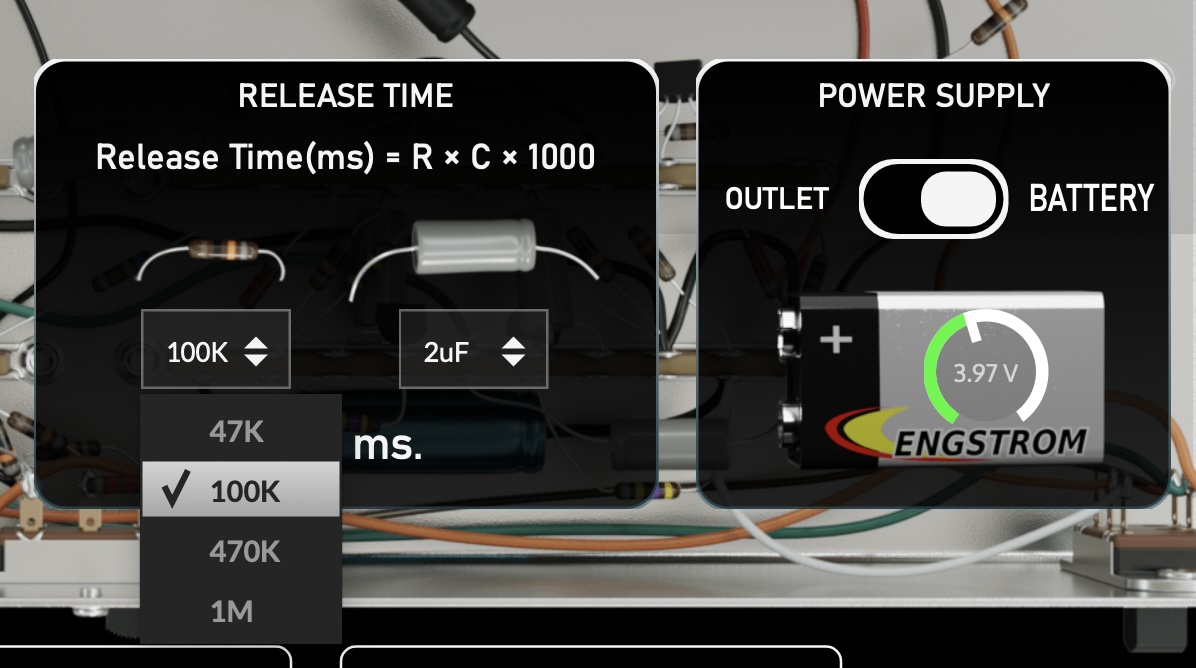
If you pop back around to the front, you’ll discover that INPUT LEVEL now has a much more pronounced effect on the signal. Set it as you want it.
Two last things to play with: Use the PRE-FILTERS to remove some of what feeds into the compressor and transformers. The Level-Loc makes the bottom end HUGE and boomy, and you might not want that. Cut some of it out to focus the action on the snare. Or, if you want that kick isolated more, roll off the highs.
Experiment with the POST-FILTERS as well. These roll off the signal after it is plundered and pillaged. The difference is when you filter things out before the compression, the amount of harmonics generated by the circuit is less. You change tone, but you also change the distortion characteristics. When you use the post filters, all the distortion is present, but you’re changing the overall tonality of the combined signal. You can, of course, use both.
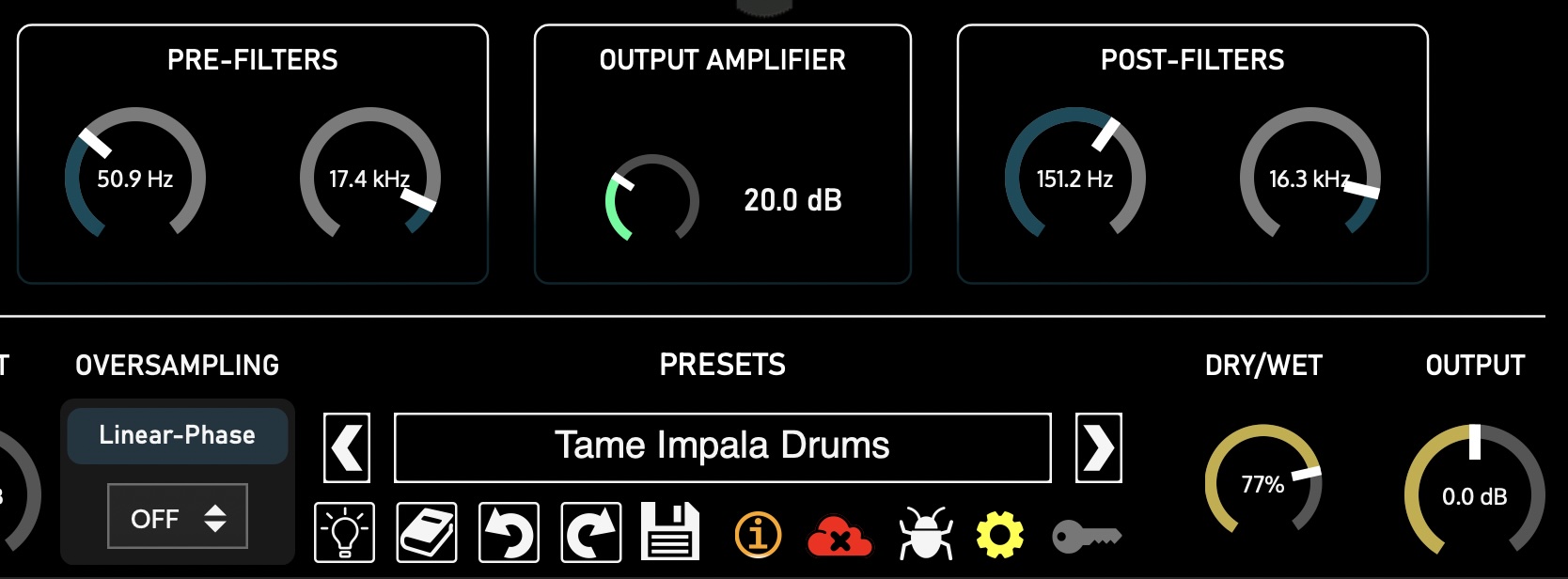
It is very easy, and lots of fun, to really get a wild drum sound with our Level-Loc and then drop it into the mix and find out it doesn’t work as well as you thought it would. Rather than change the way the Level-Loc sounds, grab the DRY/WET balance and turn it counterclockwise to let in some of the unprocessed drums. This allows you to keep the natural punch and energy of the original sounds.
You can use the Level-Loc on individual drums as well, or on any track in your recording.
Kevin Parker tracks things using a Level-Loc. It is a great piece of hardware. Be advised, though, that our plug-in version gives you access to controls that are inaccessible on the hardware piece, unless you’re handy with a soldering iron.
Last thing: the Godfather of distorted drums is the inimitable Tchad Blake. He’s the reason the Level-Loc is a thing in modern audio production and not relegated to the dumpster out behind the high school. He uses a Level-Loc somewhere on everything he recorded after 1989—the year he bought his first Level-Loc for $5 at a swap meet in California. Here’s a track from the Los Lobos album Kiko, a wonderfully inventive, musical record. There’s Level-Loc all over this, from the drums to the guitars. In fact, the Level-Loc used on it is inside of our plug-in: Tchad let us sample and measure it.
Have fun making some noise!

